Human Settlements - Urban settlement | 12th EM Geography : Chapter 2 : Human Settlements
Chapter: 12th EM Geography : Chapter 2 : Human Settlements
Urban settlement
Urban settlement
The
census of India, 1991 defines urban settlements as “All places which have
municipality, corporation, cantonment board or notified town area committee and
have a minimum population of 5000 persons, at least 75 per cent of male workers
are engaged in non-agricultural pursuits and a density of population of at
least 400 persons per square kilometers are urban settlements.
Evolution of Urban Settlement
The
first urban settlement to reach a population of one million was the city of London
by around C.E. 1810. By 1982 approximately 175 cities in the world had crossed
the one million population mark. Presently 48 per cent of the world’s
population lives in urban settlements compared to only 3 per cent in the year
1800.
Stages of Urban Settlement
Depending
on the size and the services available and functions rendered, urban centers
are designated as town, city, million city, conurbation, Megalopolis.
Town (Population more than 5000 people)
The
concept of ‘town’ can best be understood with reference to ‘village’.
Population size is not the only criterion. Functional contrasts between towns
and villages may not always be clear cut, but specific functions such as,
manufacturing, retail and wholesale trade, and professional services exist in towns.
City (Population more than 100,000)
A
city may be regarded as a leading town. Cities are much larger than towns and
have a greater number of economic functions. They tend to have transport
terminals, major financial institutions and regional administrative offices.
When the population crosses the one million mark it is designated as a million
city.
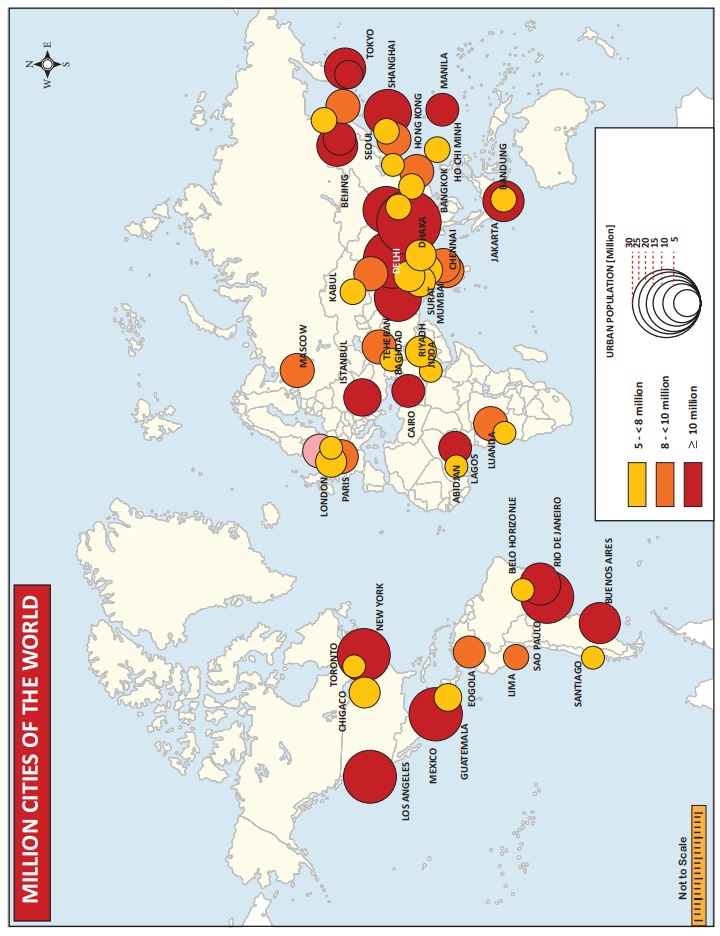
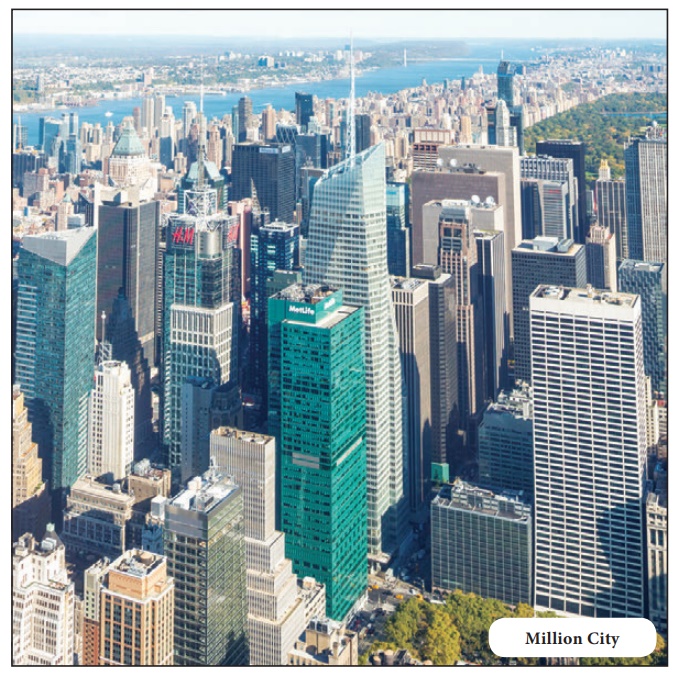
Conurbation (Population of 2 or more cities combined)
The
term conurbation was coined by Patrick Geddes in 1915 and applied to a large
area of urban development that resulted from the merging of originally
separated towns or cities. Greater London, Manchester, Chicago and Tokyo are
examples. In India, Hyderabad and Cochin are the examples of conurbation
cities.
Megalopolis (Population more than 10 million)
This
Greek word “Megalopolis” meaning “great city”, was popularized by Jean Gottman
(1957) and signifies ‘super- metropolitan’ region extending, as union of
conurbations. The urban landscape which stretches from Boston in the north to
south of Washington in the U.S.A is the best known example of a megalopolis.
Million City (Population more than 1million)
A city with million or more people is termed as the million city. The number of million cities in the world has been increasing as never before. London reached the million marks in 1800, followed by Paris in 1850, New York in 1860, and by 1950 there were around 80 such cities. The rate of increase in the number of million cities has been three-fold in every three decades – around 160 in 1975 to around 438 in 2005.
Definition of Town
In
2001, places were designated as urban or towns on the following principles.
(a)
All places with Municipality, Corporation, Cantonment Board, Sanitary Board,
Notified Area Committee etc.
(b)
All other places which satisfy the following criteria.
i)
A minimum population of 5,000.
ii)
At least 75 per cent of the male working population being engaged in
non-agricultural (and allied) activity.
iii)
A density of population of at least 400 persons per square kilometer (or one
thousand persons per square mile).
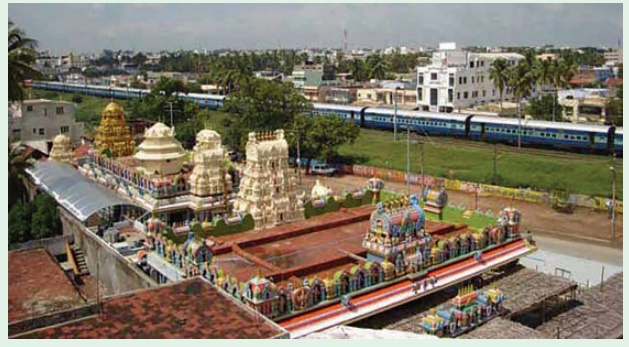
The Urban Agglomeration
As
per census 2001, it was decided that the core town or at least one of the
constituent towns of an urban agglomeration should necessarily be a statutory
town and the total population of all the constituents should not be less than
20,000 (as per 1991 census).
Urban
agglomeration is a continuous urban spread constituting a town and its
adjoining urban outgrowths (OGs), or two or more physical contiguous towns
together and any adjoining urban outgrowths of such towns. Examples of
Outgrowth are railway colonies, university campuses, port area, military camps
etc. that may have come up near a statutory town or city but within the revenue
limits of a village or villages contiguous to the town or city. With these two
basic criteria having been met, the following are the possible different
situations in which urban agglomerations could be constituted.
i)
A city or town with one or more contiguous outgrowths.
ii)
Two or more adjoining towns with or without their outgrowths.
iii)
A city and one or more adjoining towns with their outgrowths all of which form
a continuous spread.
Standard urban area
A
new concept that had been developed for the 1971 Census for the tabulation of
certain urban data was the Standard Urban Area.
The
essential of a Standard Urban Area are:
i)
It should have a core town of a minimum population size of 50,000.
ii)
The contiguous areas made up of other urban as well as rural administrative
units should have close mutual socio-economic links with the core town and
iii)
The probabilities are that this entire area will get fully urbanized in a
period of two to three decades.
The
idea is that it should be possible to provide comparable data for a definite
area of urbanization continuously for three decades which would give a
meaningful picture. This replaced the concepts of Town Group that was in vogue
at the 1961 Census. The town groups were made up of independent urban units not
necessarily contiguous to one another but were to some extent inter-dependent.
The data for such town groups became incomparable from census to census as the
boundaries of the towns themselves changed and the intermediate areas were left
out of account; this concept came for criticism at one of the symposium of the
International Geographic Union in 1968 and the concept of Standard Urban Area
came to be developed for adoption at the 1971 Census. If data for this Standard
Area were to be made available in the next two or three successive censuses, it
is likely to yield much more meaningful picture to study urbanisation around
large urban nuclei.
Basis for classification of urban settlements
The
definition of urban areas varies from one country to another. Some of the
common bases of classification are size of population, occupational structure
and Administrative setup.
Population size
In
Indiathe size of population, density of 400 persons per sq km and share of
non-agricultural workers are taken into consideration.
Occupational structure
In
India if more than 50 per cent of its economically productive population is
engaged in non-agricultural pursuits.
Administration Setup
For
example, in India, a settlement of any size is classified as urban, if it has a
municipality, Cantonment Board or Notified Area Council.
Classification of Urban Settlement
Depending
upon the functionality of the urban settlement, towns are classified as
Administrative Towns, Commercial Towns, Cultural Towns, Recreational Towns, and
Industrial Towns.
The
settlements that established for the administrative purpose or having largely
administrative function are known as administrative
towns. For example, Washington D.C., New Delhi, Canberra, Paris, Beijing,
Addis Ababa, and London etc.
The settlements that facilitate commercial opportunities are known as trading and commercial towns. For example, Agra, Lahore, Baghdad as an important transport node; Manchester and St Louis in land centers; Winnipeg and Kansas City as agricultural market towns; Frankfurt and Amsterdam as banking and financial centers; etc.
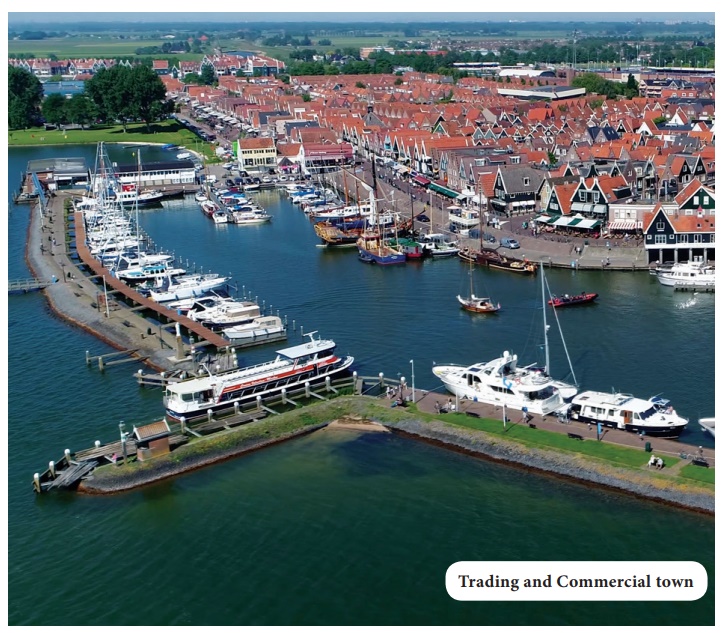
The
settlements established because of religious adherence are known as cultural or religious towns. For example, Jerusalem, Mecca, Jagannath, Puri, Madurai and Varanasi, etc.
The
settlements established for the recreational purpose are known as recreational towns. For example, Miami (U.S.A), Panaji (India), etc.
The
settlements established because of industrial development are known as industrial towns. For example, Pittsburgh (U.S.A), Jamshedpur (India), etc.
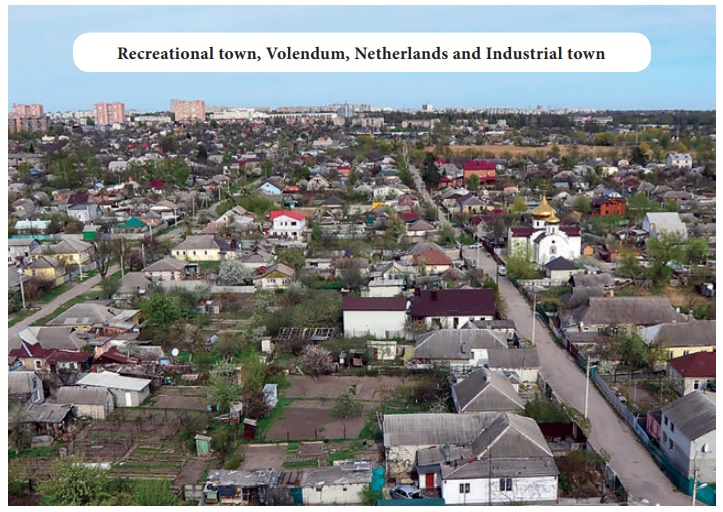
Related Topics